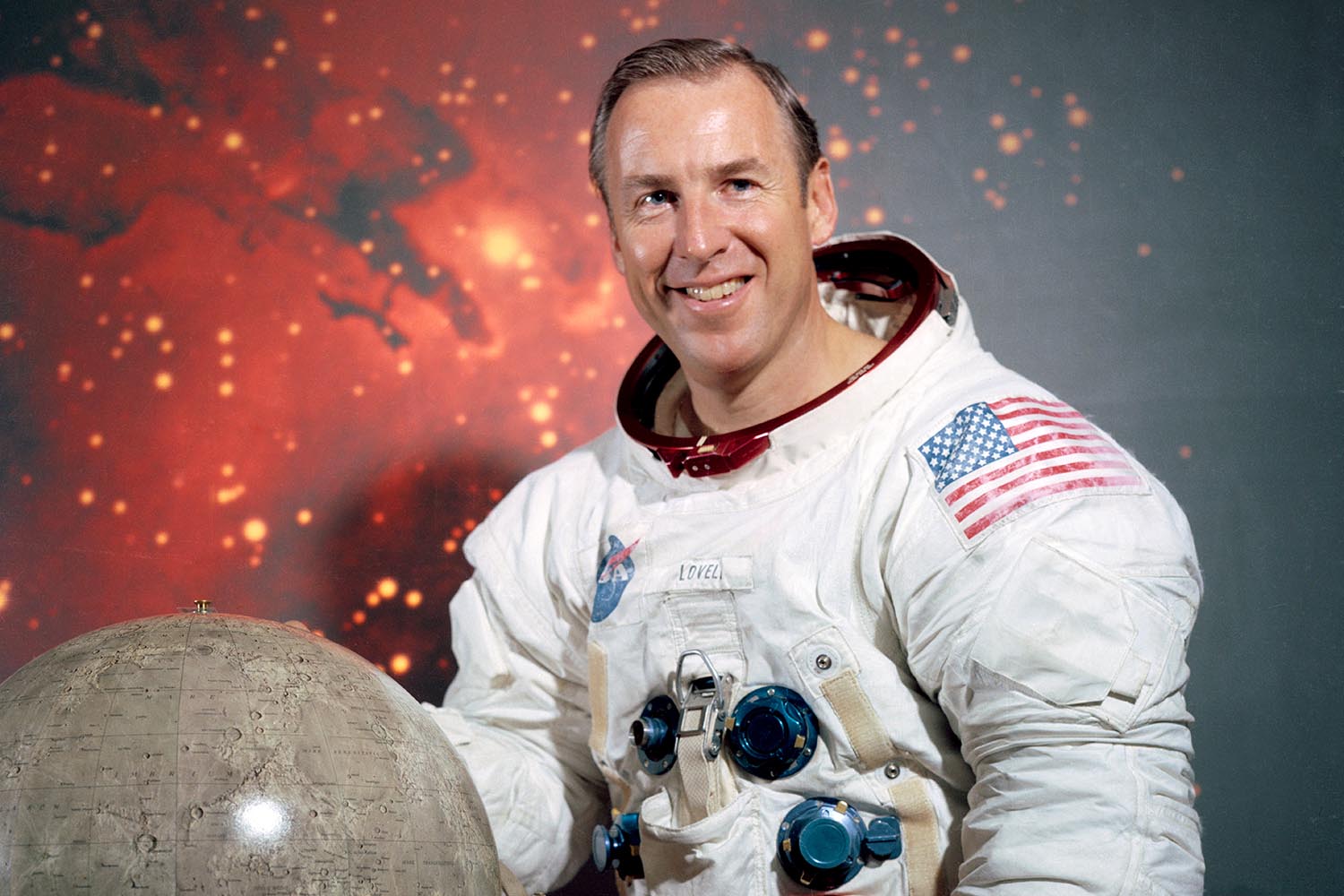The crew of Apollo 13 had been awake for nine hours; it was their third day in space. The Saturn V rocket carrying them to the moon had lifted off from Kennedy Space Center in Florida on 11 April 1970. Since the moon landings made by Neil Armstrong and Buzz Aldrin – with Michael Collins in the command module – in July 1969, space travel had come to seem routine. When the crew of Apollo 13 made the traditional TV broadcast from space, none of the three major US television networks transmitted it.
A mundane task was ordered by mission control in Houston: a stir of the oxygen tanks. However, unbeknownst to anyone on the ground or any of the three astronauts – commander Jim Lovell, along with Fred Haise and Jack Swigert – one of the tanks had a manufacturing flaw. At nearly 200,000 nautical miles from Earth, the flick of a switch caused an explosion that put the astronauts in mortal peril – and caught the world’s attention as an extraordinary drama unfolded in outer space.
“Houston, we’ve had a problem.”
Lovell’s words are precise and understated. Lovell – who died in Lake Forest, Illinois, on 7 August at the age of 97 – and his crew, and hundreds down on the ground, tried to get to grips with the issue that could so easily have doomed the men in space. It is worth noting that they are not the words spoken by Tom Hanks, who played Lovell in Apollo 13, Ron Howard’s 1995 dramatisation of events. “Houston, we have a problem,” says Hanks. It’s the film’s haunting tagline.
But there’s a crucial difference between the phrases – and it says a great deal about Lovell. The Hollywood version is non-specific, all-encompassing. Lovell’s actual words identify a single point of failure: for the next three days, until Apollo 13 splashed down safely in the Pacific on 17 April, each problem was addressed with the precision and coolness that played an important role in the men’s survival.
James A Lovell Jr was born on 25 March 1928 in Cleveland, Ohio. His father, James Arthur, was a salesman for a coal furnace company, who was killed in a car accident when his only child was just a boy. James Jr and his mother, Blanche, moved to Milwaukee, Wisconsin. Space travel always intrigued him, and as a teenager he built a rocket powered by gunpowder. It exploded in mid-air, but his journey into space had begun.
But his course stayed true on Earth as he headed for space. At Juneau High School, Lovell worked behind the counter of the school cafeteria to qualify for free lunches. There he spotted a freshman standing in line for her meal. He asked Marilyn Gerlach if she would go to the junior prom with him. She said yes, and they married in June 1952, just after he graduated from the United States Naval Academy in Annapolis, Maryland. They were married for more than 70 years – Marilyn Lovell died on 27 August 2023, at the age of 93 – and had four children, Barbara, Susan, Jeffrey and James. In addition, there were 11 grandchildren and nine great-grandchildren.
After serving as a test pilot in the navy he was accepted into Nasa in 1962 to train for Gemini and Apollo flights. He first flew to space in December 1965 in Gemini 7: the flight included the first rendezvous of two manned spacecraft, a manoeuvre vital to the moon landing yet to come.
And although the 1969 moon landing gets most of the plaudits, it can be argued that Apollo 8, which launched on 21 December 1968, and on which Lovell served as command module pilot along with commander Frank Borman and lunar module pilot William Anders, was just as significant, if not more so. It was the first time humans had been powered past the atmosphere by Saturn V; the first mission that took people to the moon and back; and it provided the first pictures taken by humans from space: Bill Anders’s Earthrise remains one of the most extraordinary photographs ever taken.
As her husband orbited the moon on Christmas Day, 1968, Marilyn Lovell answered a knock at the door. A department store representative presented her with a large box with moon-themed decor. A mink coat was tucked inside. “To Marilyn from the Man in the Moon,” the card read.
Lovell was awarded the presidential medal of freedom by Richard Nixon in 1970, three years before he retired from Nasa. He went on to form Lovell Communications, a Chicago consulting firm that provided PR advice to corporations, and in 1994 co-wrote Lost Moon: The Perilous Voyage of Apollo 13 with Jeffrey Kluger, which served as the basis for Howard’s film. In 1995, Bill Clinton awarded him the Congressional Space Medal of Honor.
Fear wasn’t in Lovell’s lexicon: practicality and focus were. He once referred to feeling “apprehensive” during the crisis of Apollo 13. He went on to say: “But you have to have a positive attitude, number one. And number two, we were all from test pilot backgrounds, so naturally, this was an adventure.”
Dr Kevin Fong, who interviewed Lovell several times for the second series of the BBC podcast 13 Minutes to the Moon – which focused on Apollo 13 – was captivated by “the Lovell laugh” and by what he learned from the astronaut: that no matter how impossible the future looks, you’ve just got to try.
James A Lovell Jr, astronaut, was born on 25 March 1928, and died on 7 August 2025, aged 97

